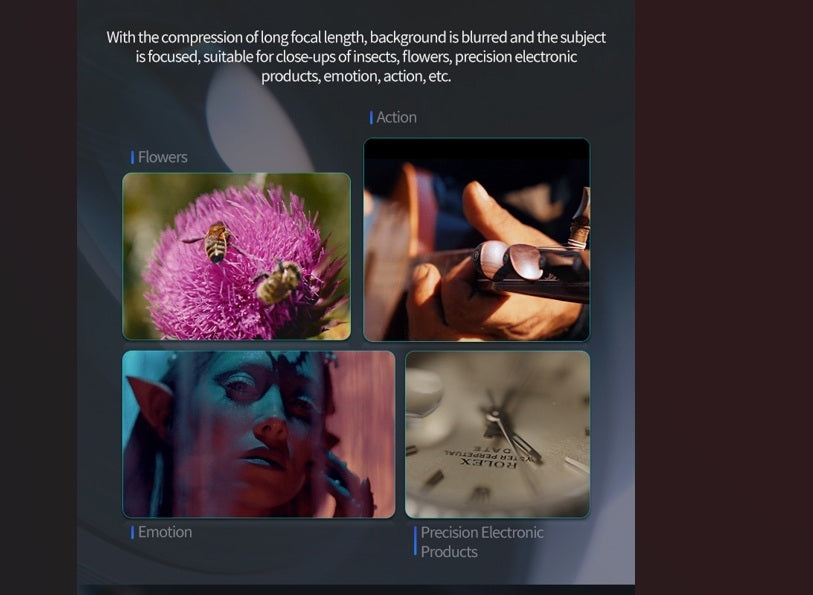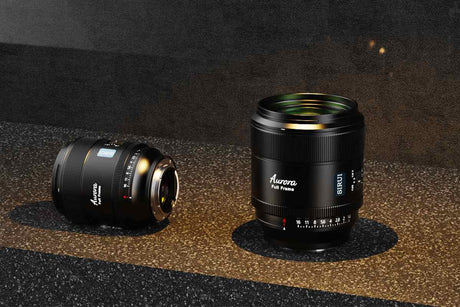If you want to learn about prices for vario lenses and invest in this technology, read our 2025 price overview as well as our recommendations for worthwhile lenses.
As new software technologies like AI and networks advance rapidly, this is also observed in other industries, including camera hardware. One of the biggest and most sought-after innovations in this industry is vario lenses, valued for their flexibility and creative potential.
What are vario lenses?
Vario lenses are often confused with zoom lenses. They feature an internal optical design with variable focal length, allowing the user to adjust magnification without moving the camera. This multi-focal capability enables a subtle, gradual transition between focal lengths.
These lenses are conquering the industry thanks to their ability to quickly adjust framing and composition without needing to change the lens. They help filmmakers shoot in fast-paced or unpredictable environments without blur or lost shots.
The previous generation of these lenses had issues with losing focus after changing focal lengths. However, newer generations have minimized these problems. High prices for vario lenses still have a bad reputation.
Prices for vario lenses in 2025:
Such lenses are generally significantly more expensive than conventional prime or zoom lenses. Factors like high-quality glass and coatings, as well as design features such as carbon fiber, magnesium alloy, and weather sealing, drive the price up.
In 2025, an entry-level zoom lens costs between 300 and 1,000 US dollars. A mid-range zoom lens costs between 1,000 and 3,000 US dollars, and a professional lens that can compete with a high-end zoom lens costs between 3,000 and 15,000 US dollars, in some cases even more.
The high prices of these lenses are mainly due to their construction. The calculation and grinding of the lens surfaces in this lens system are significantly more complex, which is necessary for smooth transitions between different focal lengths. Additionally, expensive materials like mineral glass or special plastics are used to avoid scratches and reflections. All this leads to higher costs.
Should you buy a zoom lens?
It depends; zoom lenses are a good choice for experienced photographers and videographers. For professionals, these lenses are not suitable. There are two reasons for this: First, these lenses require considerable skill due to the necessary refocusing after zooming, unless you have already spent over 10,000 dollars on a newer generation of such lenses.
Secondly, you get an equally powerful and more user-friendly lens at half the price, with which you can still shoot professional photos and videos. Moreover, in 2025, many new brands offer professional lens features at a significantly lower price than a mid-range zoom lens.
Don't get us wrong: These lenses are ultra-sharp and deliver excellent results. However, they need to be refocused, which can significantly slow down shooting and even lead to missed moments for inexperienced users, especially beginners.
Summary:
In short: When analyzing zoom lens prices in 2025, choosing zoom lenses or traditional prime lenses is recommended. These are significantly cheaper and offer a comfortable long-term investment with industry-leading optical quality. An example is the SIRUI Saturn 35/50/75 mm T2.9 1.6x anamorphic carbon full-frame lens, covering the most common focal lengths of 35 mm, 50 mm, and 75 mm in high-quality housings. All these lenses are designed as powerful tools for beginners and professionals to optimally support their creative work.
With a price under 1000 dollars and well below the average price for zoom lenses, this lens delivers high-quality cinematic images with unique horizontal flare, a characteristic feature of Hollywood-style video recordings. You also get an ultra-wide cinematic aspect ratio with true anamorphic character and full-frame coverage.





